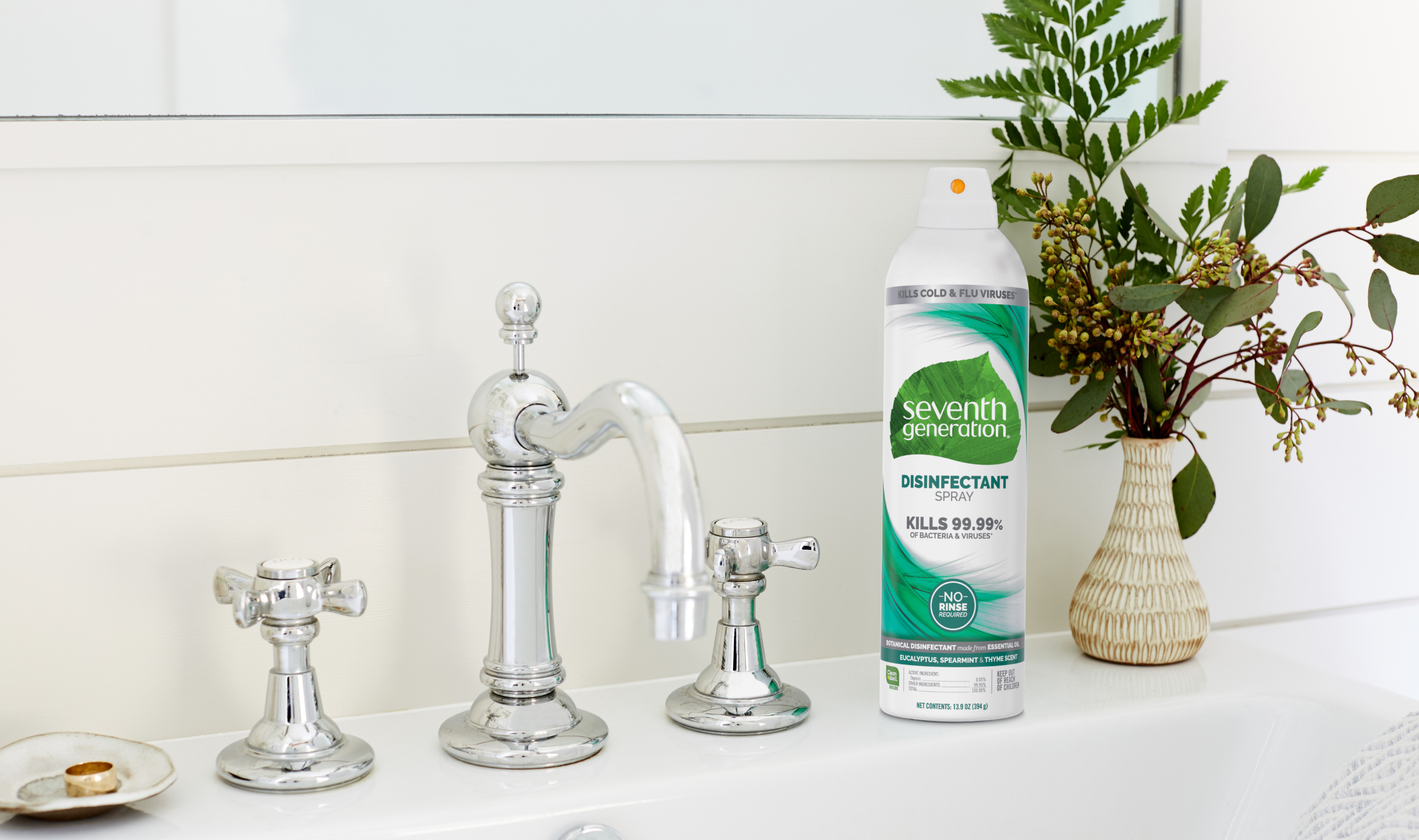Germaphobes Beware! Your home may look spotless, but there could be household germs lurking right now in places you might not expect to find them (and in a few where you do). The good news? Once you know where to look implementing a cleaning and/or disinfecting routine is easy. A little soap and water, and in certain cases a dose of disinfecting spray and wipes, and some common sense are usually enough to keep things clean help reduce household germs.
1. Cutting Boards. We're guessing you knew about this one. But did you know there can be as many as 200 times more fecal bacteria on the average cutting board than on your toilet seat? (ick). Cutting boards are breeding grounds for household germs and cross-contamination.. Keep a few cutting boards on hand so you'll always have a clean one while the one you just used runs through the dishwasher. You can also use a disinfectant on plastic cutting boards (and others that are hard, non-porous surfaces) to help kill household germs
2. Kitchen Sponges. The moist crevices that make sponges so effective are also the reason they're the #1 germ hangout the whole house. A New York Times article quoted Elizabeth Scott, co-director of the Simmons Center for Hygiene and Health in the Home at Simmons College in Boston saying, "A sponge that's been in use for no more than two or three days in a kitchen will harbor millions of bacteria." And if you're using the same sponge to wash dishes and clean your counters, you could be just spreading those germs around. For your counters, consider using a paper towel and an all purpose cleaner for everyday cleaning or a paper towel and disinfecting spray when you want to kill household germs. For sponges used on your dishes, and put them dishwasher whenever you run it. Microwaving them on high for one minute also works.
3. Carpet. According to Men's Health, carpets are veritable germ buffets featuring food particles, pollen, skin cells and pet dander - favorite dishes for germs like E. coli and salmonella. Your fashionable rug may contain as many as 200,000 bacteria per square inch. Vacuum regularly, but realize that because a vacuum doesn't always reach the bottom of the carpet, it's difficult to rid yourself of E. coli, salmonella and other bacteria. Hire a professional once a year for a deep steam-cleaning.
4. Knobs, Switches, and Handles of Every Kind. This one seems like a no-brainer, but it's easy to forget about doorknobs, cabinet handles, and light switches, not to mention appliance handle. Give kitchen handles and knobs a disinfecting wipe whenever you use them, and once a week, give switches and other handles a once-over using disinfecting wipes.
5. Makeup & Cosmetic Brushes. These little germs breeders spend a lot of time around our eyes, lips, and facial skin, picking up sweat, oil, dead skin and germs as they go. Clean them regularly using hot soap and water.
6. Wet Laundry. How often do you run a load of laundry and forget about it? Most of us just toss it in the dryer when we finally remember it, but wet laundry is a regular Petri dish for germs. Put clean clothes in the dryer (or hang outdoors to dry) as soon as possible after they're done washing. Left them to sit overnight? Run them through a cycle again.
7. Your Toothbrush. Of course it's loaded with bacteria - think of where it spends its time. But it's your own, so unless you've been sharing, chances are the germs on it will not make you sick. Just store the toothbrush so it dries between uses (studies have found that flushing the toilet can spew bathroom-related bacteria into the air) and replace it every 4 months.
8. The Coffee Maker. This might be the most surprising germ factory on the list. Even though coffee itself has some antimicrobial properties, most home coffee makers don't get hot enough to kill anything growing in the wet, dark environment of the water reservoir or the machine's internal piping. Run a 50/50 mix of water and white vinegar through the machine once a month to help inhibit the growth of mold and some bacteria. Let half the mixture run through the machine, then switch it off for an hour before finishing the cycle. And don't forget to deep-clean the carafe!
9. Shoes. Considering all we walk through in the course of a day, it's no surprise that shoes can track significant amounts of bacteria indoors. Besides E. coli, a study showed the soles of the shoes picked up Klebsiella pneumonia bacteria, a source of wound and bloodstream infections as well as pneumonia. There's no easy fix, but checking your shoes at the door is one solution.


